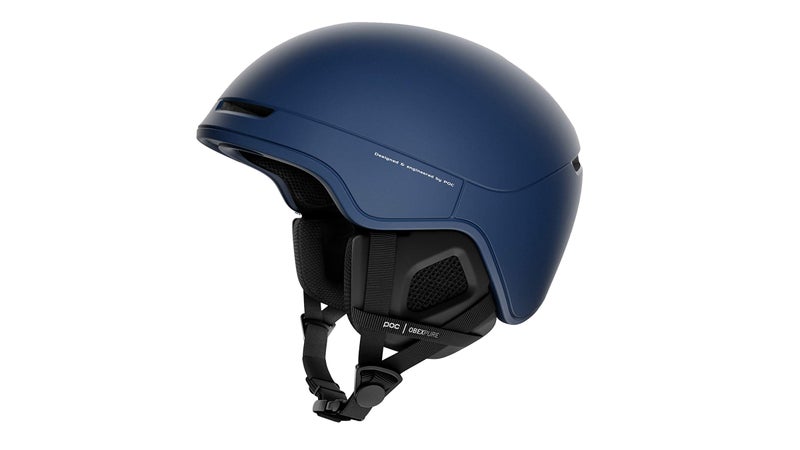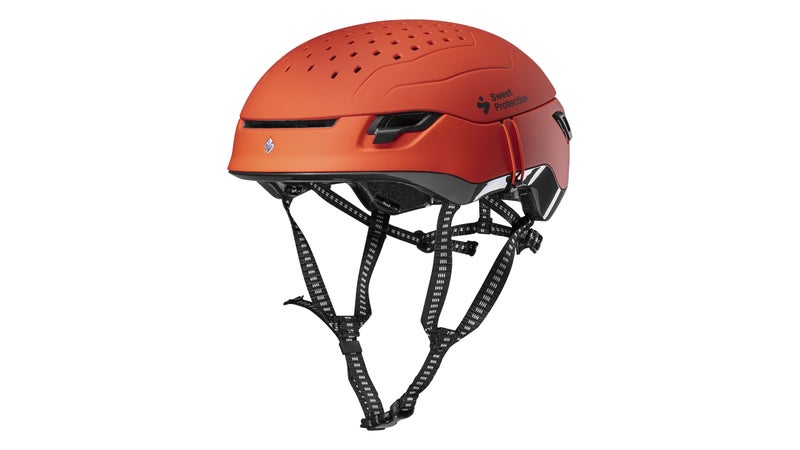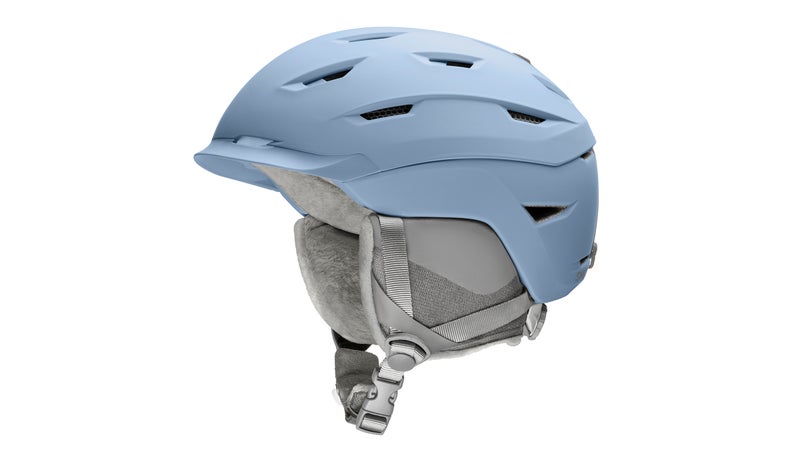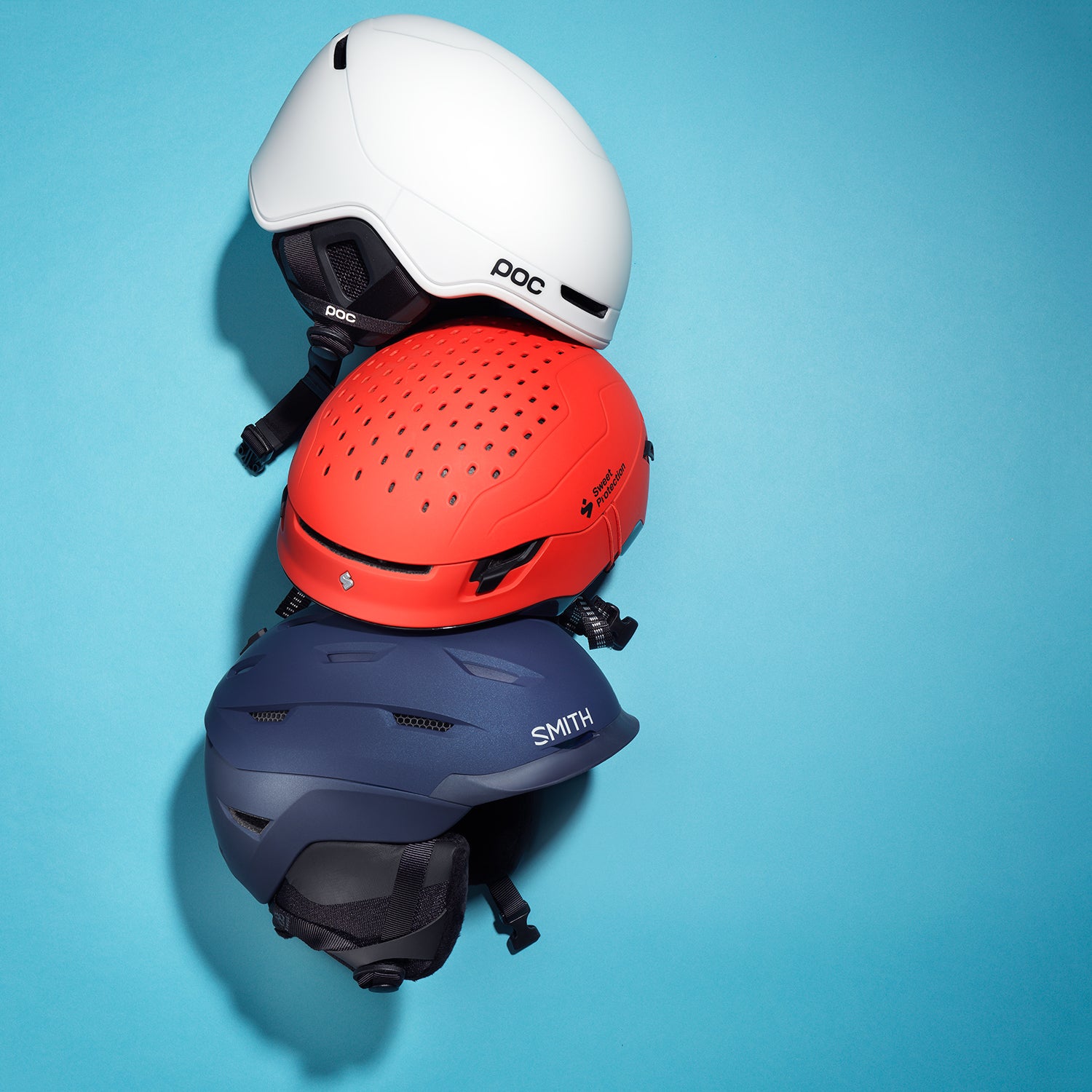Giro Terra MIPS ($160)

Let’s be honest, no one gets amped about strapping on a helmet. But these hard-shell insurance policies protect our heads in the event that we eat it. There are lightweight options that make staying safe feel less burdensome, but they’re often flimsy or look like they belong on a skimo podium. Giro finally solves that with the women’s Terra and men’s Jackson. Despite having the sturdy look of an in-bounds lid, the Terra, at 14 ounces, is lighter and breezier than many others we tested. Testers said it was so comfortable, it felt like skiing in a hat. And it has all the protective qualities you need, including a tough polycarbonate shell bonded to a shock-absorbing foam liner, and MIPS technology to help reduce the rotational effects of side impacts. Discreet venting offered enough cooling for a casual boot-pack on a warm day. For those who don’t like helmets, Giro’s practically disappears while getting the job done.
��
POC Obex Pure ($140)

Best Deal
We’ve been consistently impressed over the years with the comfort, style, and feature set that POC brings to its lids. But that excellence has always come at a price—we rarely test a helmet from the Swedish company that costs less than $250. The Pure is the most stripped-down model in the Obex line, and it’s the first helmet POC has put out at such an accessible price point. Thankfully, the only thing testers found missing was the sticker shock. We were able to easily tighten and loosen the fit with thick ski gloves on, a benefit of the Pure’s straightforward single-wheel system. And ample cushioning, coupled with hollowed-out ear pads, made the helmet just as comfortable as those costing twice as much.
Sweet Protection Ascender ($160)

Best for the Backcountry
In the past, our touring testers had two options: either sweat it out literally in a helmet overbuilt for the skin up, or do so figuratively in a minimalist climbing lid that was so flimsy, it had them fearing for their lives on the ski down. Lucky for them, the Ascender is a climbing helmet that’s also certified for skiing. And it kicks ass. There are no fewer than 105 vents—the most on any helmet we’ve ever tested—and they were extremely effective, dumping heat during spring missions in the Siskiyou Mountains. The Ascender felt substantial enough despite its hyperlight 13 ounces, but be warned: that low weight involves some compromise. The helmet doesn’t have the cushy comfort of its more resort-oriented counterparts; its half-inch-wide strips of padding are spartan.
Smith Liberty MIPS ($200)

Best for the Resort
Often the highest compliment we can pay a helmet is to call it a reliable workhorse. The new Smith Liberty (and men’s Level) is exactly that, with the warmth and full-coverage protection you need on storm days. Testers loved the unbreakable elastic in back for holding goggles, as well as the coziness of the brushed-fleece liner and removable ear pads, which kept them snug in a squall in Lake Tahoe. One gripe: the Liberty felt bulky while strapped to a backcountry pack. But in-bounds, the venting—adjusted with a sliding lever that’s easy to operate with gloves on—prevented us from overheating as we sidestepped to back bowls. Get the MIPS version for added insurance in a crash, or skip that feature and save 30 bucks.
��



